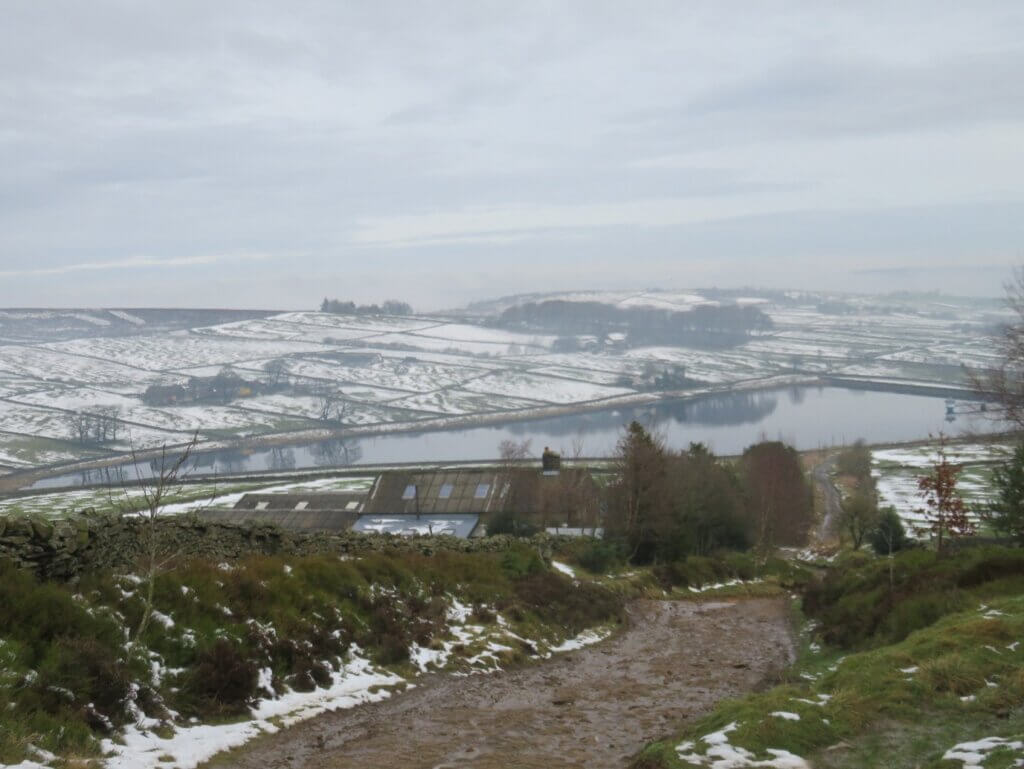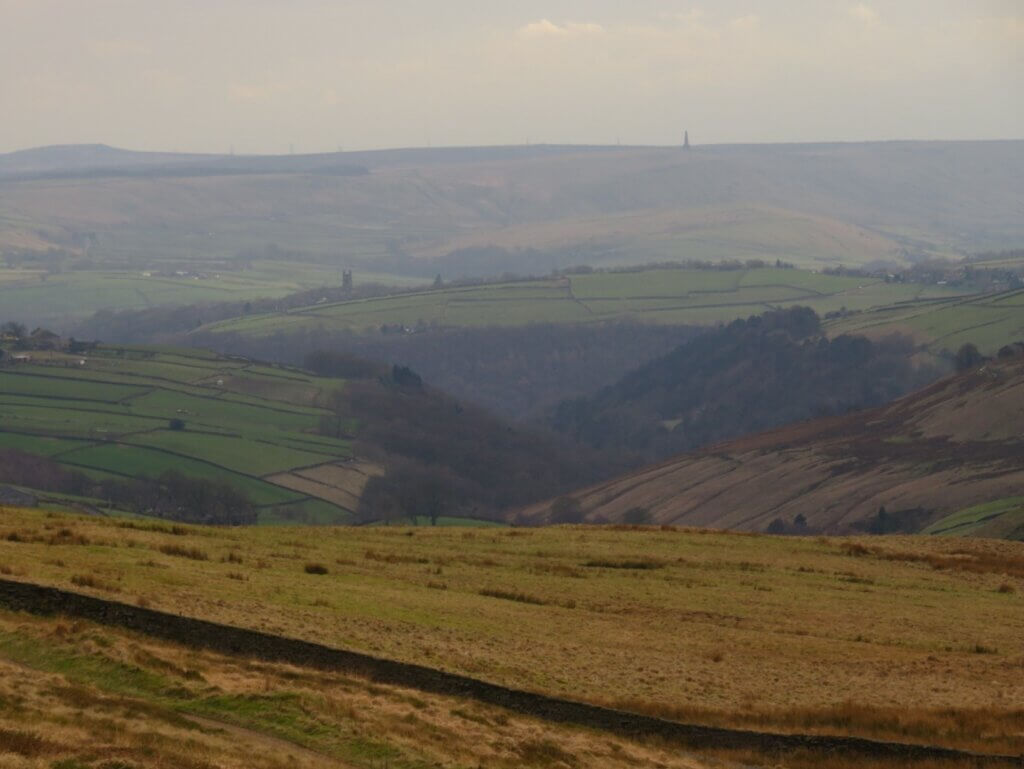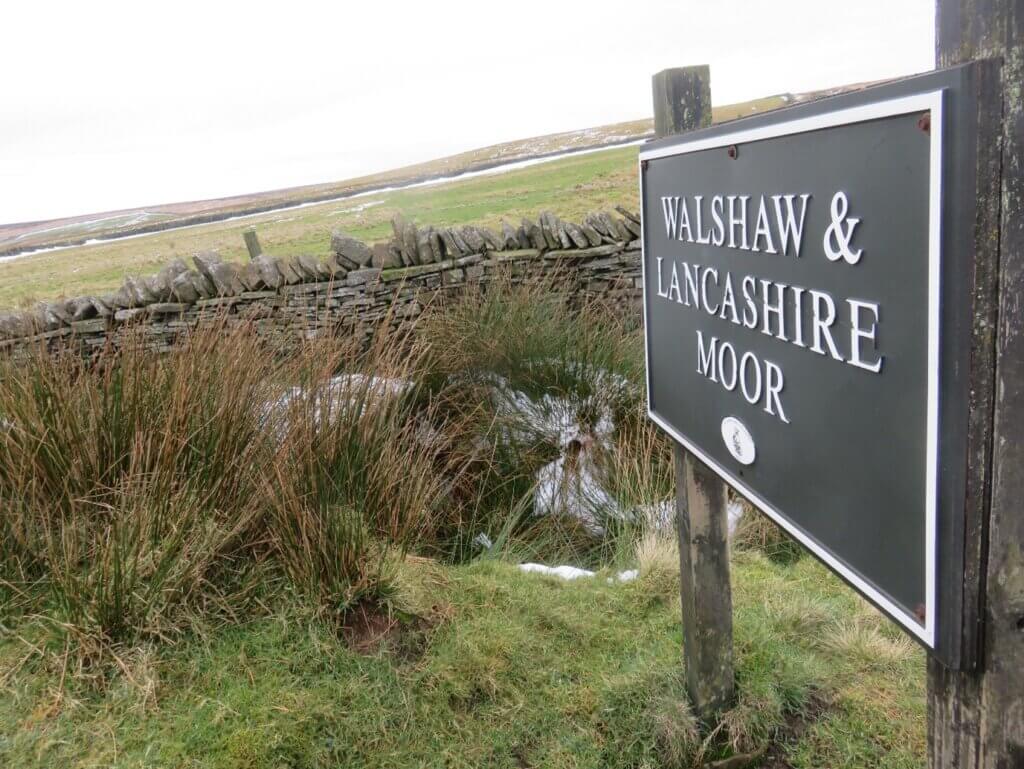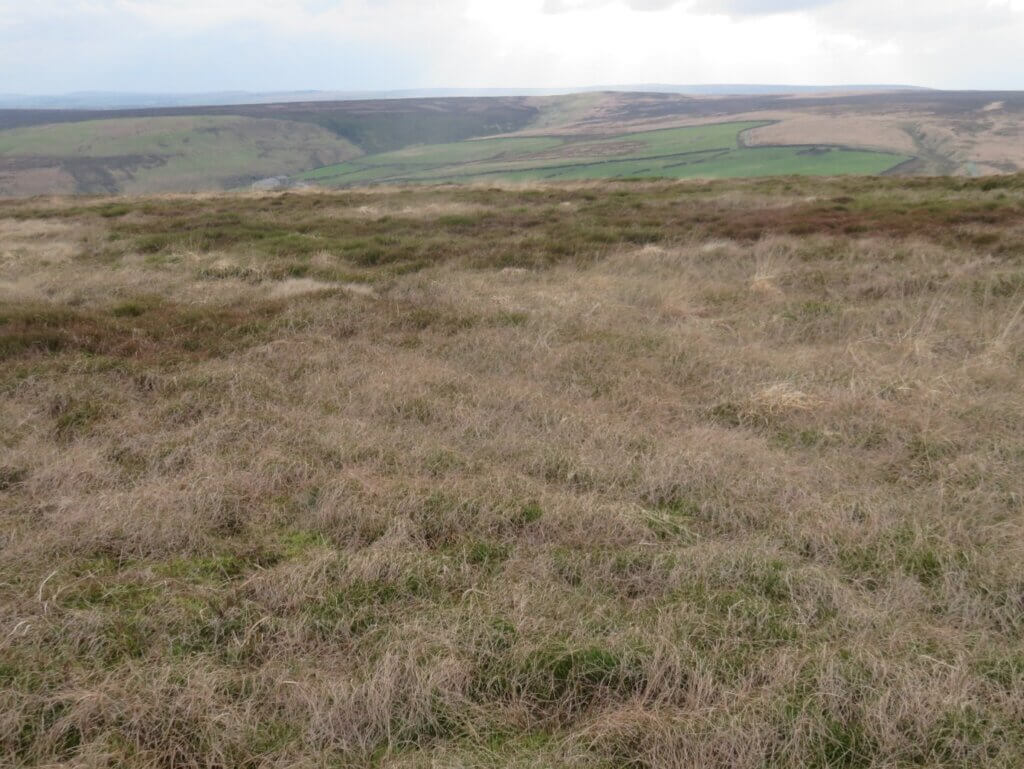
Nick MacKinnon is a freelance teacher of Maths, English and Medieval History, and lives above Haworth, in the last inhabited house before Top Withens = Wuthering Heights. In 1992 he founded the successful Campaign to Save Radio 4 Long Wave while in plaster following a rock-climbing accident on Skye. His poem ‘The metric system’ won the 2013 Forward Prize. His topical verse and satire appears in the Spectator, and his puzzles and problems in the Sunday Times and American Mathematical Monthly. Email: [email protected]
The new Policy Statement on On Shore Wind was published on 8 July by the Department for Energy Security and Net Zero (Ed Miliband) , the Department for Housing, Communities and Local Government (Angela Rayner) and HM Treasury (Rachel Reeve). It is almost the first announcement of our new government. The multiply protected peat habitat and red listed birds of Walshaw Moor are now first in the firing line.
The national and international barriers to Calderdale Wind Farm are that i) its electricity will not be clean because of the sequestered carbon released ii) its peat habitat is deeply protected in law iii) we have international obligations to threatened wildlife no less onerous than Botswana carries for the rhino, and iv) Walshaw Moor is the wild locus of the Brontë sisters and inhabits the imaginations of millions of people worldwide. These barriers are very high.
I see the battle front as clear: our greed for electricity and the right of owners to industrialise any land to generate it v Nature, of which we are a part and on which we depend.
The Campaign to Save and Restore Walshaw Moor has been working since the developers WWRE sent in their scoping report on 22 September 2023. Although the decision on where to begin the complete industrialisation of the South Pennines will be taken in London, local people are best placed to understand what the issues really are. Here, as usual, we continue to visit the proposed turbine sites one by one. In order not to disturb the huge assemblage of ground nesting birds, we have been avoiding the sites in spring and early summer, and this blog was written in February when the threat of a new policy statement on on-shore wind was still no bigger than a hand.
+++++++++++++++++++++++++++++++++++++++++++++++++++++++++
Turbine 40: Harry Side Edge SD 99767 33645 ///policy.having.superhero


We belong to Kanagra Writers a group based in Oxenhope. Susie Delves (SD) has lived and worked in the area for most of her life; now in semi-retirement, she teaches yoga and mindfulness, believing walking in nature to be one of the most calming activities that everyone can access. Nick Robinson (NR) is an editor and a former freelance photojournalist, whose work has appeared in national and local media. He has also co-authored a textbook Family Business, and written three novels.

10 February 2024
SD On a misty February morning we set off up the old Haworth Road towards the proposed site of T40 with an idea of writing about our thoughts and feelings or response as a group. We are three of the Kanangra Writers, a mixed bunch of Worth Valley residents who share a love of words and the moors. Our blog will appear in high summer, when it will help to bridge the nesting birds gap.
NR The first major snow of 2024 fell two days ago but is in retreat as our delegation sets off for Turbine 40. We traverse Dunkirk Beck on the path from Outside Lane and heave ourselves over the high stone stile onto Bodkin Lane. A cloud of mist hovers over Lee Shaw Reservoir to our right, and ahead the road surface gets steadily rougher. No turbines are coming up this way. At Bodkin Farm the road becomes impassable to any vehicles but Land Rovers and motorbikes.
SD The history of this route over the rugged backbone of the Pennines comes to mind. This way went packhorses weighed down with a man’s weight of wool, migrant workers back seeking employment on the land, perhaps being forced down to the growing towns as the industrial revolution roars. I’ve walked, cycled and ridden, ridden this route on horseback, and every time I am overwhelmed by the sense of history and the staggering raw beauty of the landscape that has inspired so many writers, artists, and those seeking solitude or wanting to be lost in its scale. What strikes me now, despite being with two walking companions, is silence, the eery, murky vastness clouded in the mist, offering no clue to with what else or whom you might be sharing the moors.

NR Past the farm a fingerpost points to the Calder and Aire Link; we stop to view Lee Shaw from a greater height. From here the mist stretches out to Oxenhope. The road starts to flatten out and we pause to listen to what little noise there is: nothing but geese and gulls in the distance. With every few steps we clock the changing horizon and imagined what it would like with an army of tri-bladed monopods dominating the view.
SD And I wonder, what 65 turbines in full force will sound like? Will the meditative mood of the moors be destroyed. Will we hear birdsong again or will the wildlife all migrate? I am angry and I want to cry, but I’m also mindful to ask, “Am I one of the privileged few that get to enjoy this as their backyard?” But this area, this landscape, part of a potential next AONB, is so special, it deserves to be preserved.
NR Worldwide Renewable Energy’s (WWRE) website, in the hope of persuading local people of the merits of installing 65 ginormous turbines, each the size of Blackpool Tower, across a landscape legendary in both reality and fiction, has some nice pictures of the countryside. None of them feature turbines. Who wants to see those? When you walk through or over open country you walk where others have trod for hundreds of years. You can feel nature, you’re part of it, you breathe it. If they plant wind turbines as far as the eye can see in every direction, the countryside ceases to be a place of pleasure, of retreat, of inspiration, it just becomes a place of functionality. Its primary purpose becomes profit generation. Organisations like WWRE can’t see the wonder of nature because all they can see is the balance sheet.
The road starts to resemble a railway cutting now, deep and angular. Snow is spattered all over the banking, but much has melted to form deep puddles that we mostly swerve, although one has spread the full width of the road, so we ascend some precarious banking and tiptoe round the water. Through the first gate we come to a sign that asks us to keep dogs on leads, particularly in the approaching nesting season, and ahead of us, water tumbles down a conduit and along valley, on its ultimate destination to Rag Clough Beck.

Now we can the antenna of Bradford University’s weather station – the ‘elephant’ as bus travellers on the A6033 call it, after the mural that a Yorkshire Banksy has painted on its wall – and wonder what impact the turbines would have on the station’s work. The Met Office is against Calderdale Wind Farm: the draught generated by the turbines would play havoc with their radar and make forecasting much more difficult in the area. They’re not the only major body to object to Calderdale Wind Farm: the Ministry of Defence has ‘concerns with this proposal due to the potential impact to low flying aircraft operating in the development area.’ According to a letter sent in response to Calderdale Council’s canvassing opinions, the MOD conduct exercises in planes that fly as low as 250 feet, a mere 50 feet above the height of the potential turbines. The MOD’s safeguarding manager Teena Oulaghan (great name, but who knew that the MOD had a safeguarding manager? What do they do, email the Russians and say ‘this might hurt, so put your PPE on’?) said in their response that the minimum requirement in any development would be that the turbines are fully lit, with both visible and infra-red lighting. Brilliant! Not only might we have to endure the sight of them during the day, they’d turn into a light show at night that would stop us getting to sleep. So much for getting rid of light pollution.
SD On a more commercial level, what will defecation on this breathtaking beauty and the historic site of the Bronte novels, TV dramas such as Happy Valley, do for the area’s tourist economy? Haworth and the moors are one of Bradford’s jewels.
NR The light now picks out the time-honoured marker of Stoodley Pike, proudly standing astride the horizon. I’m sure that it was constructed there were people who objected to it, but it’s so weathered and familiar, and comforting, that it’s always a welcome sight to me. Below it the tower of Heptonstall Church stands above the town of Hebden Bridge. Everyone has their own opinions, but to me this is a picture of harmony – the settlement in the valley, framed by the hills and moors that enclose it. Circling it all with an army of energy soldiers that never sleep, their blades whirring and whumping around the clock, would – at least for me – ruin the quirky beauty of Hebden and return the town to something akin to the days when all the inhabitants were slaves to the mills that ruined their lungs and made them toil six days a week. The modern tyrants would be 200-feet tall machines that would reduce the denizens of Hebden to bit players on their power-generating stage.

A large sign on the right tells us that we are on Walshaw and Lancashire Moor. Stairs Lane starts to veer off towards Thurrish Farm. The farmer comes over to greet us and I explain what we are doing. ‘Are you for or against the turbines?’ she asks. ‘Definitely against,’ I say. ‘Good, because I wouldn’t be happy if you were for them. If the scheme goes ahead, they’ll surround us.’

Ovenden Moor Wind Farm, with its nine giant turbines, only 60% of the height of what is proposed for Walshaw Moor, is away over to the left of Hebden, while a further turbine collection is on the right, above Todmorden. We can see that if the plans were granted, the turbines would make up the entire skyline from this point. Farming would be unlikely to continue in this area; neither would birds. As if to echo our thoughts, sheep in a nearby field come to stare at us. We turn back, and spy a recess in the verge next to the wall. It’s not the turbine site but it could be – a circular recess, twenty metres wide, deep enough for concrete to be packed in and form the foundation for the huge white column. I’m reminded of the Martians in ‘War of the Worlds’, their giant legs eating up the land.
Further on is a butt used by shooters. I’m no supporter of shooting, but the turbines would certainly mean the end of their pursuits. The temperature is dropping, but being out in clean, fresh air is such a pleasure. The people of Hebden and Oxenhope had to endure decades of sooty air from all the mills despoiling their lungs, but now that we make a living in different ways it seems that we can’t be happy with improvements to our lives, we’ve got to create zero carbon targets and stifle our environments with eyesores that ruin the pleasures we’ve just discovered.
The exact site of Turbine 40 is difficult to find. I enlist the help of what3words, and the arrow spins back and forth until it eventually finds the precise spot: ///policy.having.superhero It is just a velvety clump of moorland grass, but still a site that forms part of the wild and windy landscape that we know and love. And which WWRE would like to rip up and replace with a monster machine.

We begin our return. Meltwater continues to race down Stairs Lane, then Bodkin, and as we approach Bodkin Farm a black labrador tries to scare us by barking at us, but a couple of cheery greetings from us start its tail to swish and its real motive of making friends with any passers-by becomes clear. Lee Shaw Reservoir is now moodier than when we set off, the floating mistberg now having been replaced with a heavy and dense greyness. Rain starts to spot as we return to our start point, and our thoughts turn to how we’re going to combine and convey our impressions of Turbine 40 and its compatriots.
SD Does history continuously repeat itself? Is another rich, powerful organisation with foreign backing getting to pillage for their own commercial gain? What about the people of Bradford and Calderdale? Do we get walked over and dictated to again? Are we going to give this up without a fight?
++++++++++++++++++++++++++++++++++++++++++++++++++++++++
Expansiveness by Denise Gibson
 Denise is passionate about literature, and has written many stories and poems, several of which have been performed in public. A long-term resident of Oxenhope, Denise loves the area, hence her shock at the Calderdale Wind Farm plan.
Denise is passionate about literature, and has written many stories and poems, several of which have been performed in public. A long-term resident of Oxenhope, Denise loves the area, hence her shock at the Calderdale Wind Farm plan.
Just as a mother gives birth to a child that does not define ownership of the child. It is a loan to her, to protect and nurture and not defile that child. Land that is paid for by transient money does not bestow on that buyer ‘ownership’. It is a responsibility that is bestowed upon an individual for them to protect a place that others could not buy, nor could they put a price on such a place. Serenity, stillness, peace. Expansiveness – boundless, sacred space. A place to taste the wind and touch the sky on a horizon that stretches beyond views.
Where all can seek and find a freedom that exists in the hills and the waters that run down them – that trickles and gushes into their veins to make their heart beat. Dreams are made of nothing that can be bought. There is no material possession that is worth dreaming of. Just the passivity of open space that we can drift in to collect our souls.
To seek challenge from the gales, from the hills and the rocks. Feel the freedom of the birds who, unhindered, fly and bless us with their beauty and remind us that only man and his machines can block them – with his vast sail, which capture their breeze and thermals and strike them down.
++++++++++++++++++++++++++++++++++++++++++++++++++++++++++
This is the 13th in a series of 65 guest blogs on each of the wind turbines which Richard Bannister plans to have erected on Walshaw Moor. Turbines 5, 6, 11, 27, 32, 34, 35, 43, 47, 54, 58 and 64 have already been described. To see all the blogs – click here.
[registration_form]
There’s an assumption changing planning laws equals a free for all. It should be the opposite – what we need is strategic planning. It was the lack of real planning that quite rightly led to the ban on onshore and nothing has changed. Yes, the wind blows stronger in high, dramatic places but there are millions of hectares of intensive, flat arable where turbines will blend in better just like windmills did in the past. No need to trash iconic landscaped
Planning reform doesn’t have to mean a free for all, it is true, but for many politicians the aim is simply to make it much easier to get planning permission, which could result in such a free for all. It is early days for the Labour government so we have yet to see what they will do but I for one am anxious about what exactly their promised ‘fast track approval and delivery of high-density housing on urban brownfield sites’ will mean in practice. There are undoubtedly urban brownfield sites that have negligible value for wildlife that would be eminently suitable for development but there are also many that (although it may not be immediately evident to the non-naturalist) are much more valuable for wildlife than most greenfield sites. A simple, fast-track rule of thumb could cast such sites beneath the bulldozer with the loss of the wild flowers and invertebrates for which they have become important.
So, yes to reform that encourages strategic planning, but no to overly simplistic approaches to reform that could result in the loss of important sites due ill-considered assumptions about what makes a site valuable/valueless (over and above its value as building land).